着付け kitsuke: wearing/putting on kimono. This is truly an art form! But if I can do it, anyone can. I have not taken formal lessons, although I suppose I should at some point… as you can see in pictures below I am not very good but hopefully I can practice and improve some of the key points to “good kimono technique.” There are some guides online in Japanese which are very good for a beginner like me; there are also some English resources, but it is hit or miss as to how useful they are (some had good information and instructions, but others were significantly less informative). If you are interested, I recommend checking out some youtube videos on kimono dressing, yukata dressing, and obi tying, as well as tips and tricks to look good, and even tons of hair/make-up to match. This post is not a comprehensive guide, just the initial impressions of a beginner to the kimono scene.
Yukata is quite a bit simpler to put on than kimono, so after a collecting all the fiddly bits needed to put on kimono properly, I was finally ready to begin practicing with the kimono I purchased at the bargain sale. I bought the various accessories online and at second hand stores. Okinawa is not exactly mainland Japan, so very few stores even sell the pieces needed for kimono dressing, and ones that do tend to be a bit expensive. The obi-age (decorative scarf) and obi-jime (decorative cord) I was able to purchase cheaply at second hand shops (OFF-HOUSE is excellent for finding cheap bits and pieces).
So, here is the final list of items that I used for my first attempt, which is pretty much the minimum you should have to try and wear kimono. Obviously, you could use some different items, or make some substitutions to cut down on cost. Or you could go all out and add-in some of the extras (hair pieces, decorative collar, etc) to look super fancy.
- hadajuban 肌襦袢: this piece may not be necessary if you want to simple use a camisole and leggings of some sort. It is simply thing cotton one-piece to protect the kimono from sweat and such.
- nagajuban 長襦袢: this piece is more necessary. It is also an undergarment, but it features long sleeves to line the kimono sleeves and a collar (you can attach a fancier one if you wish) that should be exposed. I have seen some pictures with people definitely not wearing one of these with kimono, and without the exposed collar lining it looks a bit silly/strange, so I recommend to have some version of this. I think the effect is much cleaner and nicer looking. Yukata do not need the collar (although you can if you want), but kimono just does not look right without it. Some people use like a hadajuban and just attach a separate collar piece (the collar itself is called haneri 半襟, there is something called “easy collar” 簡単半衿, kantan haneri)– this is economical and probably a lighter feel, so I may just try this sometime. Okinawa is fairly hot and humid, so during warmer months, this would feel more comfortable. **Note: I have 2 types of nagajuban: 1 is a summer type and very thin/meshy (great for Okinawa!) and the second is a solid polyester-type fabric for cooler weather (only necessary for winter here in Okinawa).
- erishin 衿芯: collar stiffener put through the nagajuban. It gives the beautiful collar shape.
- koshihimo 腰紐: fabric ties to secure undergarments and kimono. You can instead use an elastic waist belt (often sold as a pair with korin belt), though it is handy to have some of these for helping tie obi (you remove them in the end, it just helps you keep it secure while adjusting the obi).
- korin belt コリンベルト: help stabilize the kimono collar area (secured around the body under the bust area.
- tabi 足袋: split-toed socks.
- datejime 伊達締め: used to secure the waist below the bust, where the obi will be tied.
- magic belt マジックベルト: a type of datejime with velcro, can be used instead of, or with the regular datejime. Usually one is used over nagajuban.
- obiita 帯板: stiff plate inserted between obi and kimono to maintain shape.
- obimakura 帯枕: makura means “pillow,” it is used to give the obi a beautiful shape.
- obiage 帯揚げ: decorative cloth, also used to secure obimakura and obi.
- obijime 帯締め: braided decorative cord, also used to secure obi. *you can use a obidome 帯留め decorative piece with this too.
- geta 下駄: wooden sandals worn with kimono and yukata. You could also wear zori 草履 sandals, which tend to look a little fancier.
- And of course a kimono 着物 and obi 帯.
For these pictures I used a Nagoya obi 名古屋帯, which is pre-stitched to make tying the taiko musubi easier. I have another fukuro obi 袋帯 as well, which can be used for the taiko musubi or some other types of knots as well. For informal kimono, either of these are a good choice. There are many rules as to which knot should be made with which obi should be worn with which kimono for which occasion during which season… etc. Do not feel overwhelmed. Honestly, just choose some things that you like and complement your appearance; many people, especially young people, do not know all of the rules, or even care to. People will be happy to see you in kimono, so have fun and don’t worry too much about adhering to any strict rules.
For my first time dressing and wearing kimono, I unfortunately did not bother much with hair and makeup, or even accessories… I was just sort of happy I got everything looking close to decent. I need to adjust the taiko musubi with more height, but otherwise everything else seemed to work nicely. As far as matching season, rank, etc… well I looked at some charts, and it appears that perhaps I have done O.K. Yellow, Gold and Orange are autumnal colors, matched with a komon kimono 小紋着物 (patterned kimono, best for informal wear or everyday wear, but also okay for New Years! however not for graduations, weddings or ceremonial events). I used a Nagoya obi, which also matches for the same occasions as a komon kimono (but again, not appropriate for formal events). I picked up the Nagoya obi at a second hand store, I just loved the momiji/kaede (maple leaves) with the kiku (chrysanthemum) and the fans in the orangey fall colors. I thought it would be lovely with the yellow kimono and appropriate for the season. Next time I will try my dark green fukuro obi for a slightly different look.
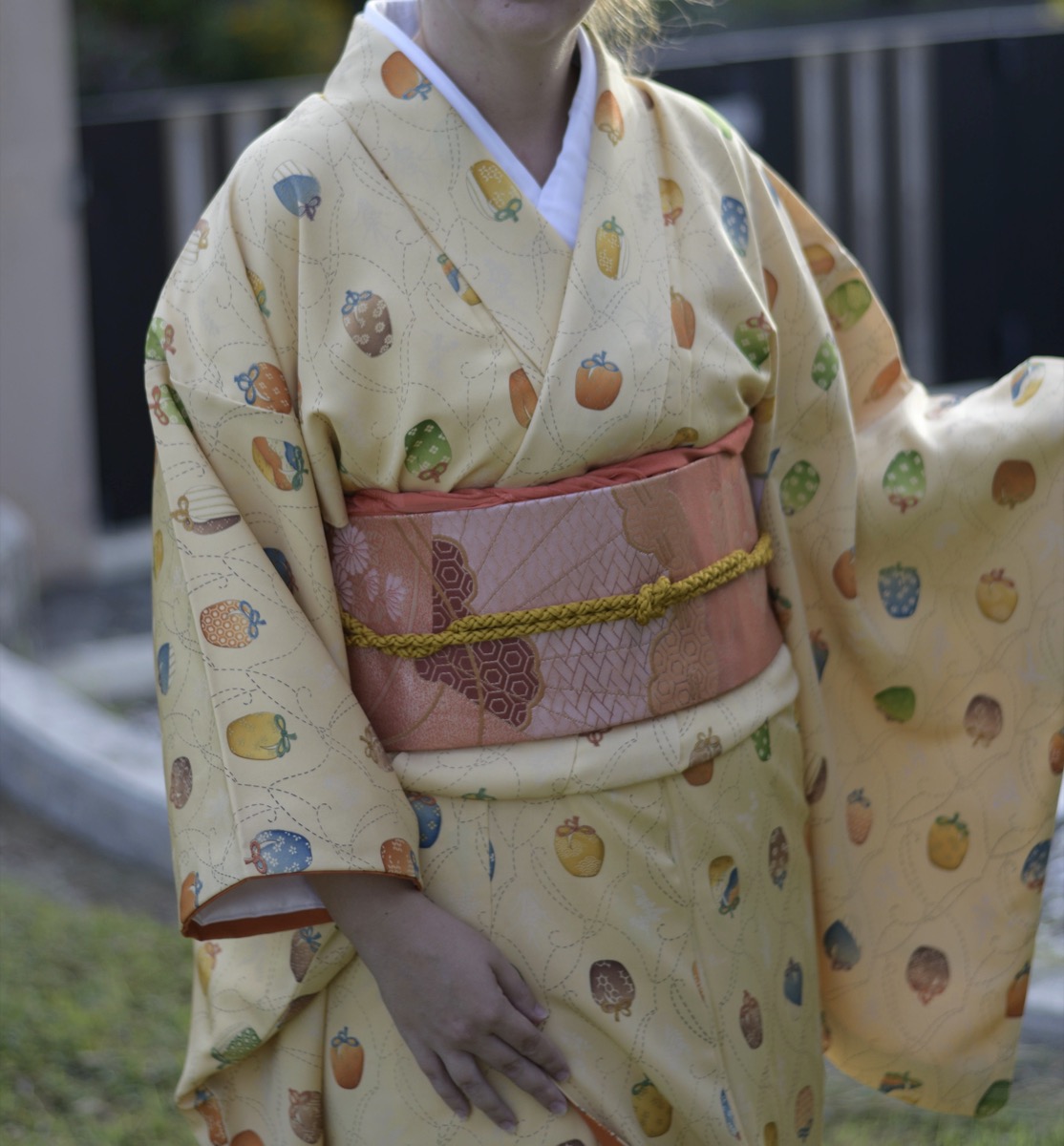
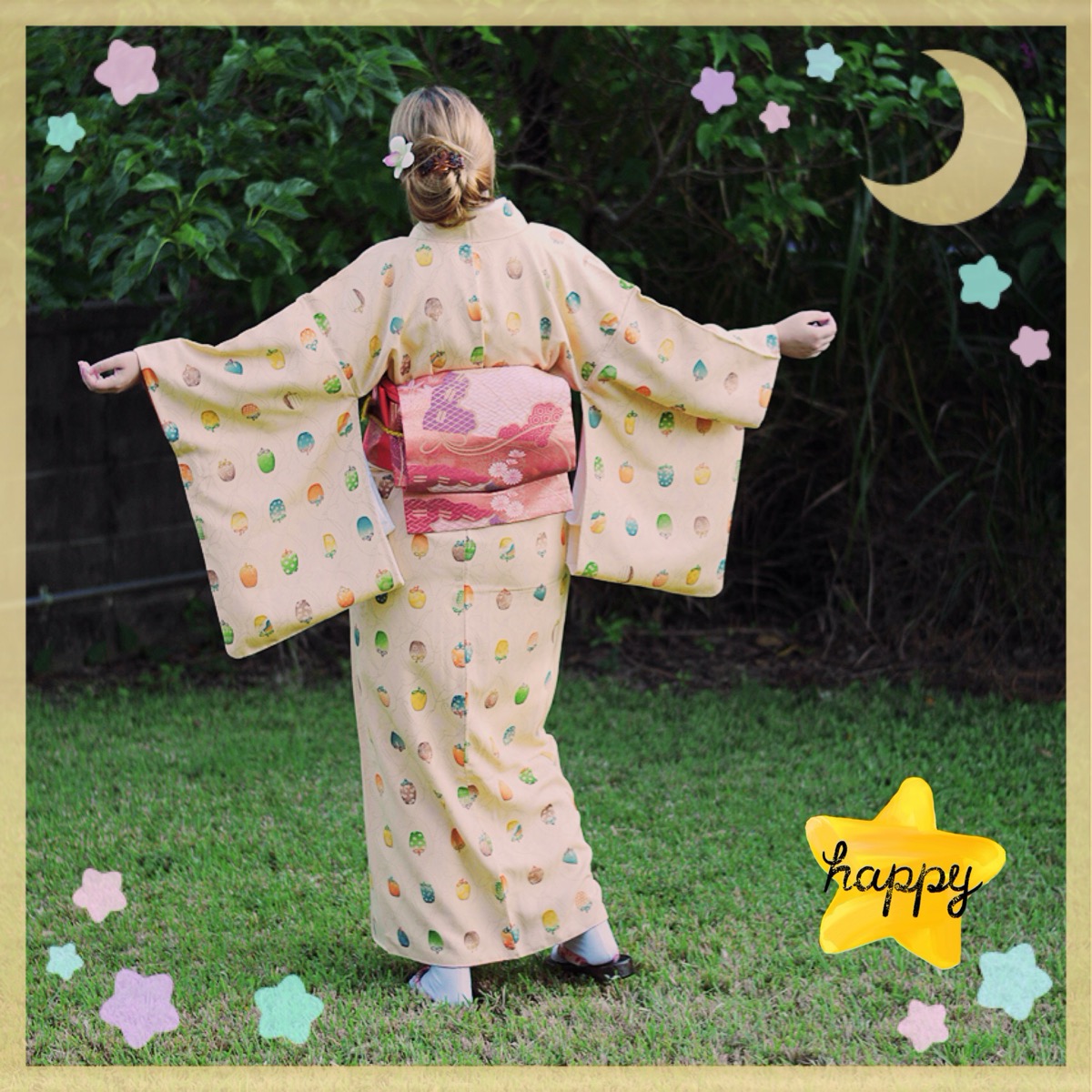
Since this first time, I have added several things to my “collection” both purchased or handmade… various obi-dome (ornaments for the obi-jime), obi-jime (decorative cords), obi-age (cloth), kinchaku (Japanese-style bag) and basket, different colors of haneri (collar), kanzashi (hair ornaments, also can use with the obi) and obi-kazari, different color tabi (socks), and of course a few different kimono and obi. It gives you a chance to explore different styles for different occasions; the possibilities are endless.
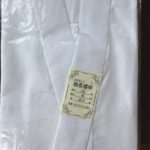
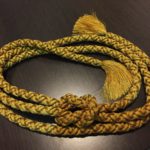
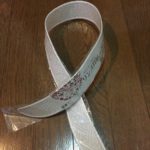
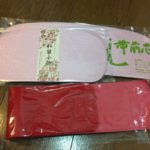
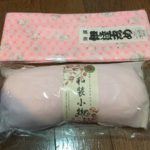
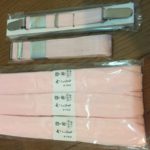
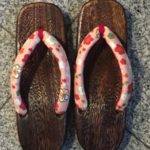
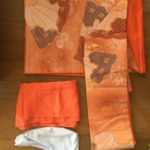
One thought on “Wearing Kimono: 着付け”